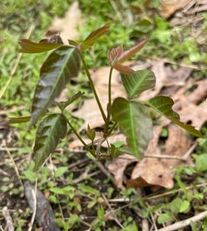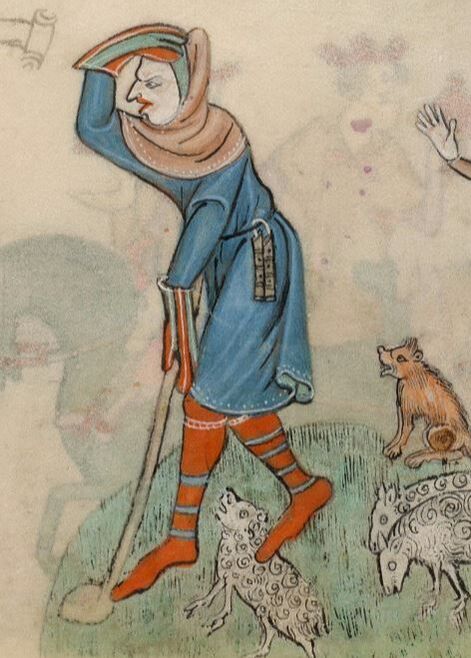The good folks who introduced me to SCA forestry have a very definite focus on things like survival skills or long 'survival' hikes (not literally survival, but carrying 50lbs for 20 miles and being cold or wet are not my idea of fun). I assumed, mistakenly, that this was all of what the Forestry program was about.
What I have learned since is that what folks choose to do in it is entirely up them. One's path might encompass fishing, herblore, edible plants, cooking outdoors, thrown weapons, research... there are so many options. Knowing that makes this all that much more appealing.
And also? If I am to be honest, the idea of putting an SCA spin on things I plan to do here mean they are much more likely to actually get done.
While I learn more about the roles of actual Foresters in England in period, I am going to start testing some different paths from an SCA perspective. One will involve local plants and I am starting that here!
What I have learned since is that what folks choose to do in it is entirely up them. One's path might encompass fishing, herblore, edible plants, cooking outdoors, thrown weapons, research... there are so many options. Knowing that makes this all that much more appealing.
And also? If I am to be honest, the idea of putting an SCA spin on things I plan to do here mean they are much more likely to actually get done.
While I learn more about the roles of actual Foresters in England in period, I am going to start testing some different paths from an SCA perspective. One will involve local plants and I am starting that here!

Poison Ivy - Nemesis of the Forest
As a Forester, I would be maintaining the forest for Royal use. While this particularly annoying plant did not exist in Medieval England, I am fairly certain that if it did it might well have been eradicated from royal presence.
I have been fighting the battle with this weed since before the pandemic. At one point, the small side yard here was entirely full of it and it was growing as high as my hip. Weekly battles that involved pulling up the entire root system now have that bit of yard fairly free of the plant, and my garden thrives there in its place.
I now am tackling the ivy in other locations here. I confess that I get very little reaction to the plant myself. I only breakout if it touches an open wound, such as a recent scratch. I still handle the plant with care (and gloves) and make sure to wash any oils off of my skin and clothes because I live with someone who is highly allergic.
At lunch yesterday, I did go out and start to pull the plant from the area around the garage. I was impressed that one root system that I extracted was nearly 30 feet long! It is no wonder that this plant spreads as rapidly as it does.
I also did a very small bit of research on this monstrosity. While the plant is native to North America and Asia, those who came to the New World were fascinated enough with it that they TOOK SOME BACK TO EUROPE AND DELIBERATELY GREW IT. (Read more HERE )
So, I tackled the weed, and will be continuing to do so as the summer progresses. Eventually the wood will be safe for his Lordship's wanderings. ;-)
As a Forester, I would be maintaining the forest for Royal use. While this particularly annoying plant did not exist in Medieval England, I am fairly certain that if it did it might well have been eradicated from royal presence.
I have been fighting the battle with this weed since before the pandemic. At one point, the small side yard here was entirely full of it and it was growing as high as my hip. Weekly battles that involved pulling up the entire root system now have that bit of yard fairly free of the plant, and my garden thrives there in its place.
I now am tackling the ivy in other locations here. I confess that I get very little reaction to the plant myself. I only breakout if it touches an open wound, such as a recent scratch. I still handle the plant with care (and gloves) and make sure to wash any oils off of my skin and clothes because I live with someone who is highly allergic.
At lunch yesterday, I did go out and start to pull the plant from the area around the garage. I was impressed that one root system that I extracted was nearly 30 feet long! It is no wonder that this plant spreads as rapidly as it does.
I also did a very small bit of research on this monstrosity. While the plant is native to North America and Asia, those who came to the New World were fascinated enough with it that they TOOK SOME BACK TO EUROPE AND DELIBERATELY GREW IT. (Read more HERE )
So, I tackled the weed, and will be continuing to do so as the summer progresses. Eventually the wood will be safe for his Lordship's wanderings. ;-)
I did start to think of other things as I was ripping up the vines, such as the fact that using gloves is necessary. While they did not deal with this particular plant in period, there are other tasks that would involve gloves and that brought my mind to the rather cartoonish mittens from the Luttrell Psalter.
The mittens are often depicted as colorful, and below you can see a parti-colored pair and one that is striped, leading me to believe that could well have been crafted from wool in addition to possibly leather. My next steps here will be to attempt some research on period two-finger mittens to see what I can find out and work towards crafting a set as part of my kit. I can then test these out against the blistering ivy.
The mittens are often depicted as colorful, and below you can see a parti-colored pair and one that is striped, leading me to believe that could well have been crafted from wool in addition to possibly leather. My next steps here will be to attempt some research on period two-finger mittens to see what I can find out and work towards crafting a set as part of my kit. I can then test these out against the blistering ivy.
Persona Summary:
- This plant was NOT known to a 14th Century Forester in England
- Remove plant when seen to make the forest safer for the King
- Ongoing effort
- Ongoing effort
- Create period gloves to help with removal of this nastiness
List of Resources can be found HERE


 RSS Feed
RSS Feed